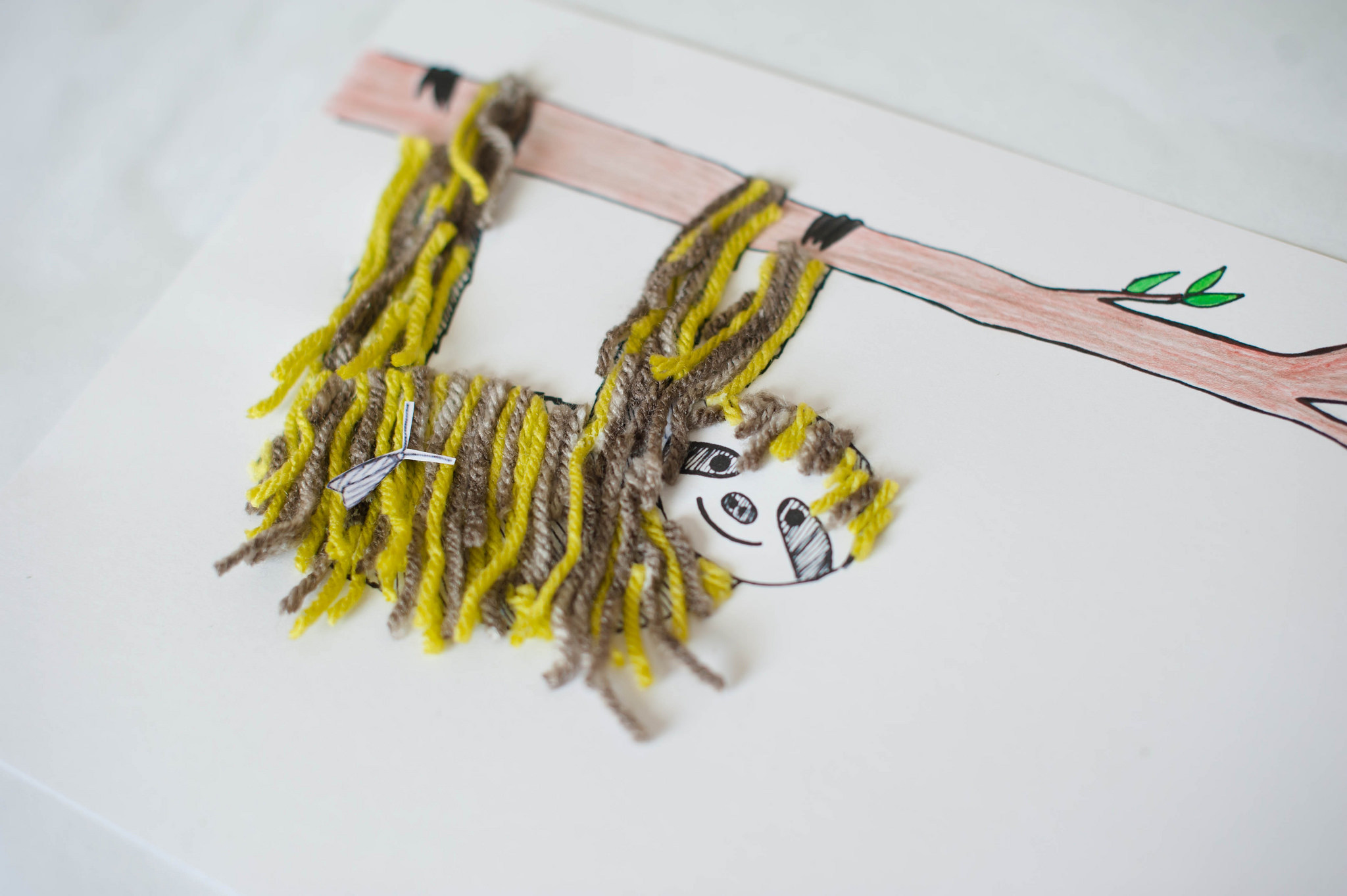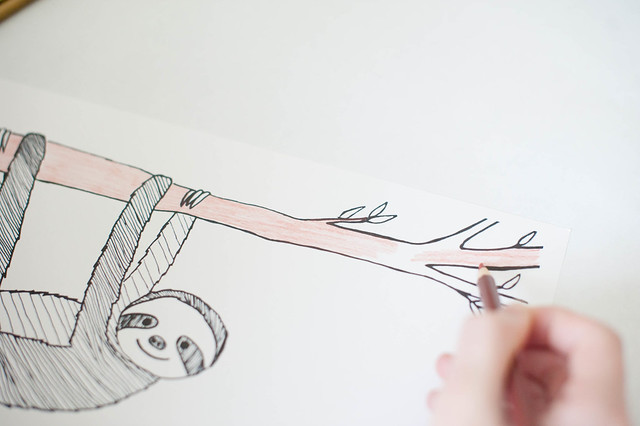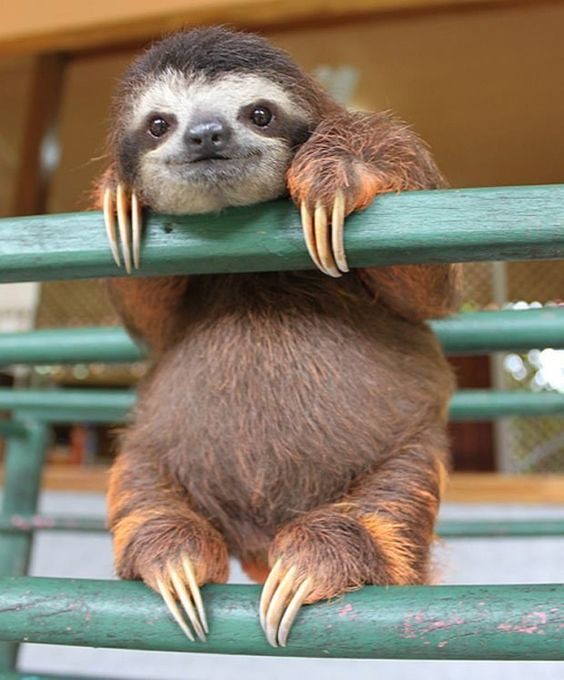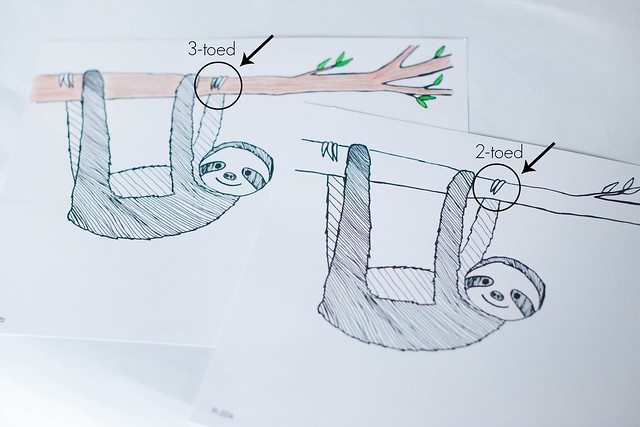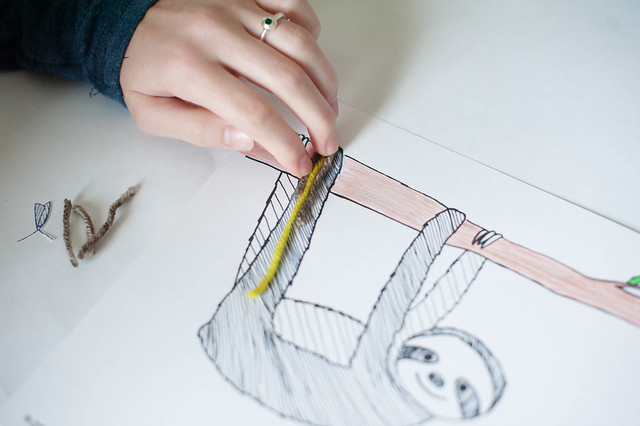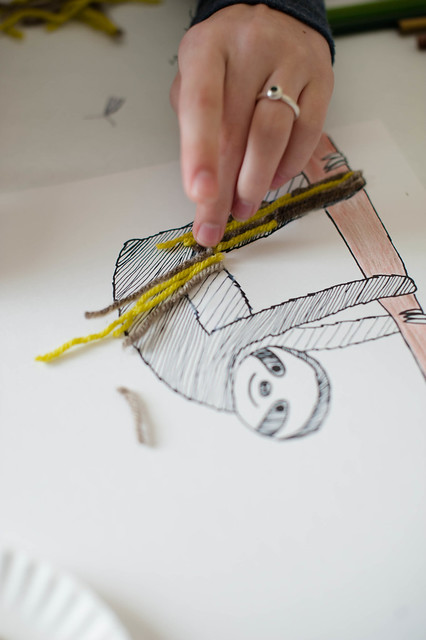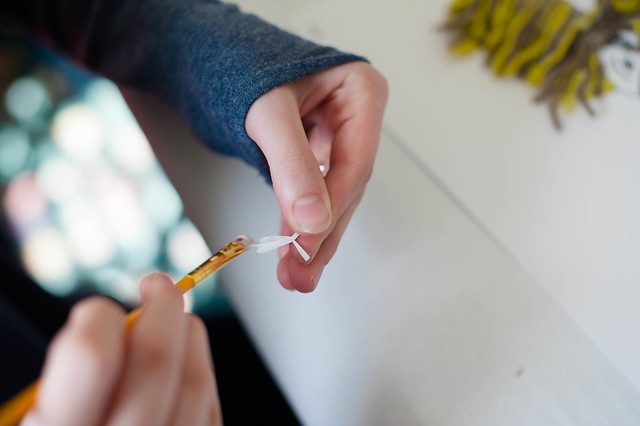The Sloth!
Since the sloth lives only in the woodlands and rainforests of South America, our study of the animals of this region would be incomplete without mention of this amazing animal! The intentionality of God’s creative design is put on display in the details of this animal’s unique features.
Each of the activities for this project will be completed in conjunction with the content below. As specific content is explained, students will complete the matching activity.
For this project you will need:
- Sloth Template 1 and Sloth template 2, print on colored or white cardstock
- Glue
- Small paper plate for glue
- Paint brush
- Yarn pieces cut 1/2″ – 2″ pieces, colors should include gray, tan and green
- Sloth Moth page, printed on regular paper and cut into small pieces
- Colored pencils or crayons
- Sloth Example
How to Adapt this Lesson:
Adjust the difficulty level of this lesson by picking and choosing which content/activities you cover from the five following categories:
1) An Upside-Down Life
Imagine spending your entire life in the upside-down position! Do you think you would like this? Sloths, a type of mammal that lives in the Tropics, spend the majority of their lives this way – hanging upside down from a tree.
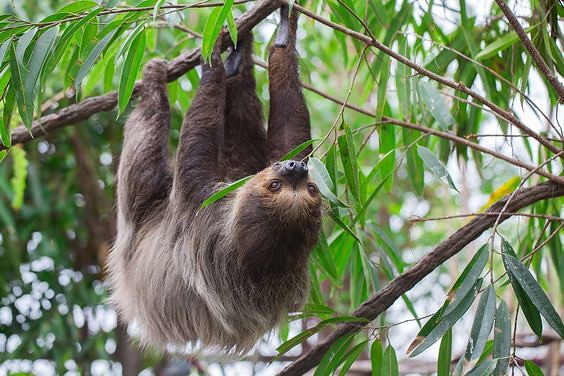
sloth hanging upside down | source
Couple that with the fact that sloths move at a deliberately, if not painfully slow pace, it is not uncommon for sloths to spend their entire lives in just one tree. While sloths can be found sitting on the branches of a tree, they prefer eating, playing, fighting, and even giving birth, hanging upside-down from their favorite tree limb. And what’s really amazing…. they also sleep this way! That’s because God uniquely designed their muscles to remain rigid while they sleep, and relax when they’re awake – the opposite from what happens to humans!
Color the tree and its leaves as a reminder of the sloth’s special habits and habitat!
2) Head on A Swivel
Most mammals have 7 vertebrae in their necks. The sloth, however, has 9. This slight difference in this mammal’s anatomy reaps big rewards. The extra vertebrae allow the sloth to swivel its head 270 degrees. So while it may spend it’s life hanging upside-down, it doesn’t have to see everything that way.
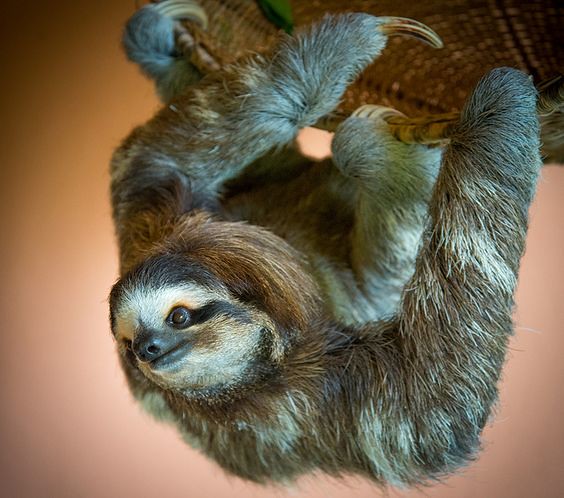
sloth head swiveled backward | source
Try this! Lean back and put your body in an upside-down position. Now attempt to turn you head so it is right-side-up. It can’t be done. Instead, you will only be able to rotate your head to the side so that your head is in a sideways position. However, note the pictures at this link that show sloths with their heads in an upright position. God’s unique creative design is on display in the sloth!
3) 2 Toes or 3?
Sloths come in the 2-toed and 3-toed variety. Little known fact….. ALL sloths have 3 TOES. The 2-toed and 3-toed distinction is actually referring to a sloth’s “fingers”, not his toes. The confusion is based on a tricky translation. Since sloths are indigenous to Latin America, a Spanish-speaking culture, the word “toes” is translated from the Spanish word “dedo” which is a more general term referring to a person or mammal’s “digits”. Therefore, “dedos” is a more general term referring to fingers OR toes. So technically, the sloth should have been named a “2 fingered” or “3 fingered” sloth. But that’s just not as much fun to say, is it?!
Instruct students to “Find the Difference” between the Sloth Template 1 and Sloth Template 2. Template 1 has a 2-toed sloth, and Template 2 has a 3-toed sloth.
4) A Weird Green Hair-Do
First the hair-do: Most animals, because they live right-side-up, have hair that grows in the “back to belly” direction. Sloths’ hair, on the other hand, because they live most of their life upside down, grows in the “belly to back” direction. This allows water to drip off the sloth more efficiently, helping them avoid becoming completely water-logged.
Now the hair color: A sloth’s natural hair color is usually somewhere in the tan or gray spectrum. But did you know a sloth hair can actually turn green? Each hair on the sloth’s body is actually equipped with a groove in the hair shaft that helps it absorb water. The algae live in this water and multiply during the rainy season, turning the sloth a nice shade of green. This green “hairdo” works as camouflage, hiding the sloth from hungry predators. And with a few licks, it can also give the sloth a little nutritional power boost!
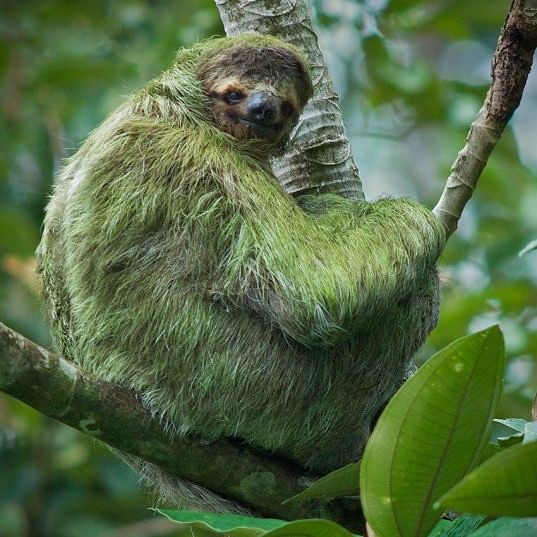
algae growing on sloth | source
Now it’s time to give your sloth a hair-do!
Paint glue on the diagonally-lined areas of the sloth (these areas indicate areas for hair placement). Apply glue liberally.
Gray, tan and green yarn should be placed in the “belly to back” fashion mentioned earlier.
Finally, complete the hair-do by giving your sloth some “bangs”.
See Sloth Sample, R-22d, for direction on how to place yarn.
5) The Sloth Moth
Finally, the sloth moth – well, that’s just fun to say! The sloth and the sloth moth are tight. One benefit of the sloth’s laid-back lifestyle is that it doesn’t worry too much about personal hygiene and grooming. This means that various “critters” can enjoy an easy and protected life in the fur of a sloth. The sloth moth not only feasts off the green algae in the sloth’s fur, but it also lays its eggs in the sloth poop! The moth larvae hatch and fly off to find another sloth host!
Color and cut out the moth from R-22c. Moth should then be glued onto the sloth fur.

